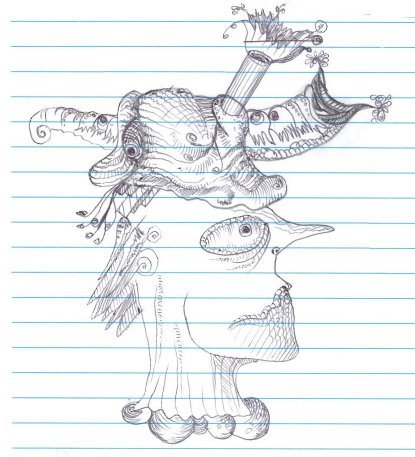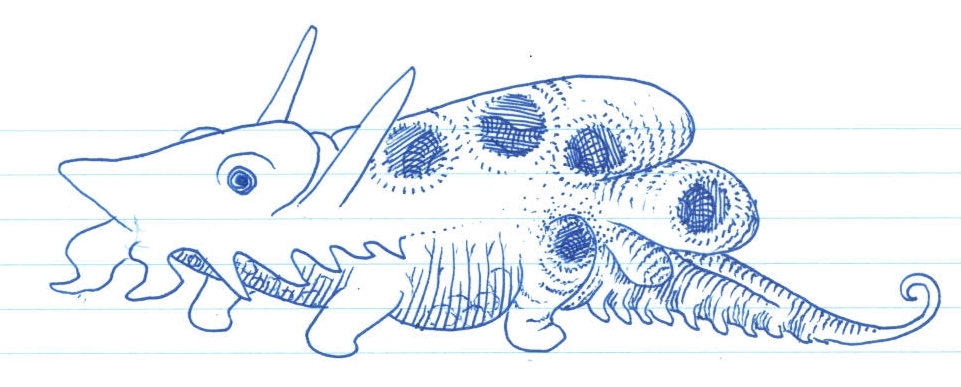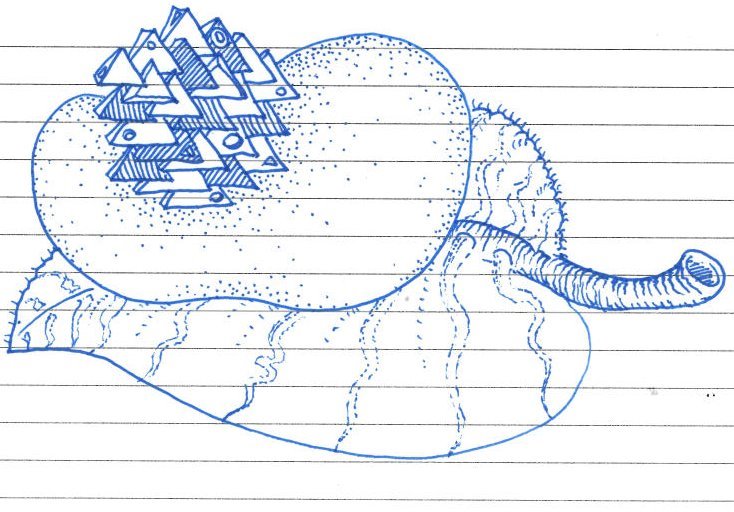Yevgen Barsukov’s love affair with chemistry began when his seventh-grade science teacher showed the class how to burn sulfur. That tame experiment wasn’t dangerous enough for his middle-school curiosity, so Yevgen returned to his family’s apartment in Kiev that afternoon and began figuring out the chemical equation to create something riskier – sulfuric acid.
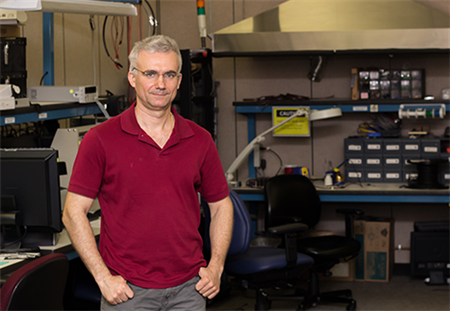 “Of course, I wanted to make sulfuric acid because it’s a dangerous substance,” he said. “I collected some pieces of sulfur from a railway close to my home and made a little apparatus that used iron oxide – rust – as the catalyst. That was one of the stinky experiments I did in my parents’ kitchen. It is very nasty stuff. It makes you cough and feel like you have severe pneumonia. After doing a couple of those experiments, I didn’t make much sulfuric acid.”
“Of course, I wanted to make sulfuric acid because it’s a dangerous substance,” he said. “I collected some pieces of sulfur from a railway close to my home and made a little apparatus that used iron oxide – rust – as the catalyst. That was one of the stinky experiments I did in my parents’ kitchen. It is very nasty stuff. It makes you cough and feel like you have severe pneumonia. After doing a couple of those experiments, I didn’t make much sulfuric acid.”
Today, Yevgen is a TI Fellow and leads a team of engineers developing algorithms for improving battery performance in our Battery Management Systems group. His work makes the wide leap from deep theoretical knowledge to practical, real-world problem-solving. And the curiosity that drove Yevgen to create a toxic cloud in his parents’ kitchen as a teenager still drives him today.
“You have to have a hacker’s attitude,” he said. “It’s important to have not just a theoretical or scientific understanding of things. There should be a drive to make something that works and to take the shortest possible path to it. For that, you have to use whatever information is out there, and there’s plenty of information.
“One of the reasons our business has a lot of growth potential is that, in recent years, the type of mobile devices that are appearing are becoming more and more unpredictable,” he said. “Just a few years ago, nobody would have predicted that there would be such a thing as a smart phone. Now there are smart watches. People are talking about completely unexpected things, and all of these devices use batteries, gauges and chargers. Everything that has batteries – everything that’s portable – is a potential customer.”
Problem-solving
Among Yevgen’s 24 patents are innovations that have led to our Impedance Track™ and MaxLife™ technologies. Impedance Track battery gauges calculate – with 99 percent accuracy – the remaining charge in Li-Ion batteries. The smart gauges used in MaxLife ensure more efficient charging. So, if your smart phone’s battery sometimes drains a lot faster than you expect or your laptop takes too long to recharge, then his innovations offer hope for your next upgrade.
Lithium-ion batteries aren’t just power supplies for cell phones, laptops, cameras and drones. They’re small electro-chemical factories. Inside the battery, ions move back and forth through the lithium, and their motion creates energy. Pushing the ions too fast can create a chemical reaction that degrades the battery quickly. Not pushing them fast enough means a battery takes too long to charge. Gauges with Impedance Track and MaxLife technology are tiny circuits built into the battery that report the useable remaining capacity to ensure maximum system run-time and manage the charging process.
Developments in battery technology have progressed steadily, but slowly, through the years. Advances in electronics, however, have moved with dizzying speed. As a result, battery developers must make compromises. They can either increase energy density or increase power capability, but they can’t do both in the same battery.
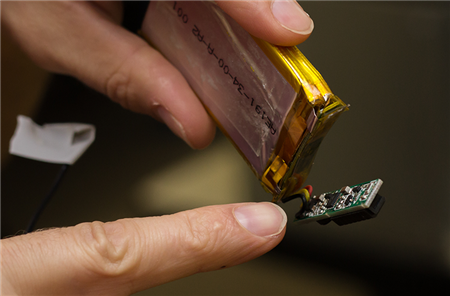 For example, developers can make a Li-Ion battery that can charge in five minutes but has significantly less energy than a battery that charges in two or three hours. Finding that delicate balance has been a challenge for designers.
For example, developers can make a Li-Ion battery that can charge in five minutes but has significantly less energy than a battery that charges in two or three hours. Finding that delicate balance has been a challenge for designers.
That’s where Yevgen’s expertise comes into play. His innovation, MaxLife technology, addresses the challenge by providing a chemistry-dependent current that’s matching the highest possible rate of charge that the battery can take without being damaged. This current changes with the state of the charge, temperature and age of the cells.
“MaxLife is one of the things that helps solve this problem because we can charge the same battery in a shorter time without sacrificing any of its energy density,” he said. “We can move the compromise more toward what we want – to have both higher density and a shorter charge time.”
Systemic view
As a young man, it didn’t take long for Yevgen to become hooked on chemistry. He abandoned plans to study art and instead earned bachelor’s and master’s degrees in chemistry in Ukraine. In 1996, he received a doctorate in physical chemistry at Kiel Christian-Albrechts University in Germany. After graduating, he accepted a job developing battery-related test equipment and software at a company in South Korea and became a thought leader in the field of impedance spectroscopy. A few years later, when the Korean company’s battery division changed direction, he landed a job as an applications engineer here at TI.
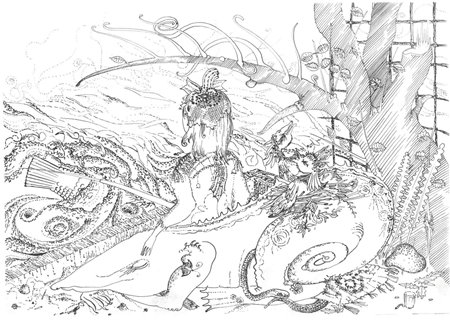 And though he opted to study chemistry instead of art, Yevgen never put down his pencil. He has continued to refine drawing techniques he first learned from his artist grandfather in Kiev, and today his engineering notebooks are filled with sketches that he scans and posts on his personal blog.
And though he opted to study chemistry instead of art, Yevgen never put down his pencil. He has continued to refine drawing techniques he first learned from his artist grandfather in Kiev, and today his engineering notebooks are filled with sketches that he scans and posts on his personal blog.
“I have this habit that many people at TI know,” he said. “I draw when I’m sitting in a conference or meeting. If I’m listening and drawing, it helps me stay alert and stay focused.”
But there’s a connection between his science, art and a third passion – philosophy – that goes beyond staying alert in meetings. It’s a holistic perspective that helps him understand patterns, behaviors and opportunities.
“Chemistry teaches a systemic view of things,” he said. “For example, we as chemists have a conviction that we can predict the behavior of two chemicals that we mix together even though they consist of billions of randomly moving molecules. The same thing applies to philosophy. Systemic thinking is critical in understanding everything as a whole – looking at humanity as a whole, trying to understand life forms as the result of natural laws. My art is more about the intuitive feeling that something fits into the picture or that something doesn’t fit into the picture than trying to depict some reality. It’s quite a systemic view of everything.”
We've shared some more of Yevgen's drawings below:

